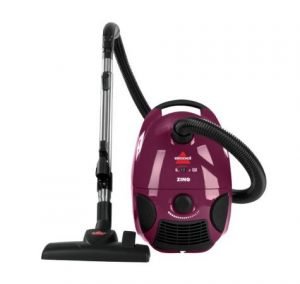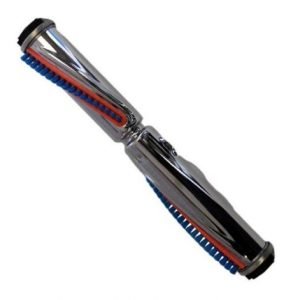
I don’t think there is anything more annoying than a vacuum cleaner that won’t pick up dirt. Unfortunately, this is the reality of many homeowners, apartment dwellers, cleaning companies, and those who live on the road. How do you fix loss of suction in a vacuum?
Lost vacuum suction can be a real pain. Today, we brief you on the causes of suction loss as well as how to deal with it. This is applicable for all vacuum types – Sharks, Dysons, Mieles, and so on.
What causes loss of suction in a vacuum cleaner?
There are quite a number of things that lead to lost vacuum suction. In this section, we expound on the causes and how to deal with them. What are the five things that you need to do to fix loss of suction in your vacuum?
This is how to fix lost vacuum suction:
1. The bag or dirt canister is full
This is the main reason that leads to lost suction in vacuums. As you clean, dirt collects in either a bag or a dirt bin/cup/canister depending on the type of vacuum. With time, the vacuum bag or canister fills up with dust, dirt, and debris.
With a bagless vacuum, it’s easier to monitor since the dust cup is usually transparent or translucent. Also, there will always be a ‘Max’ or ‘Full’ line engraved on the outside. Usually, this line is at about two-thirds to three-quarters full. However, we recommend that you empty the dirt once it’s about 50% full.
Of course, it’s hard to monitor the dirt level in a bagged vacuum. So in this case, whenever you notice a reduction in suction, just remove the bag and replace it with a fresh one. Occasionally, the loss of suction may have been caused by holes or tears. To avoid this, always buy genuine replacement bags.
If you are lucky, though, you may own a vacuum with a full bag indicator. A good example is the Bissell Zing Bagged Canister Vacuum, 4122. Here, a warning light turns on to let you know when it’s time to replace the bag.

2. Clogged filters
Secondly, you need to confirm that the filters are not clogged. Most vacuums have pre and post motor filters. Generally, the pre-motor filters are more prone to clogging. You need to check the user manual to know exactly how to remove and check the filters. This is because different vacuum models are designed differently.
While most filters are washable, just countercheck with the product description or the manual to be sure. If they are washable, just rinse them under cold, running water. Then, leave them out to air dry for about 24 hours. Once you reinstall them in their respective slots, the suction should return to the normal level.
The manual should also indicate how often the filters must be washed or replaced with genuine filters. However, you may want to do it a bit more frequently if you live in a dustier (or dirtier) environment. Of course, the more you vacuum the more you need to check your filters.
3. Damaged or clogged hose
If your vacuum has a hose, you may need to check it for blockages and cracks/holes. If any of this is present, it could be the cause of reduced suction. Cracks and holes may be repaired, but the best solution would be to get a replacement.
If there is any dirt that is stuck inside the hose, you can simply use a cloth hanger to get it out and unblock the hose. Always remember to switch off and unplug the vacuum before removing any components.
4. Brushroll damage or blockage
Another cause of suction loss in vacuums is a damaged brushroll or a blockage of the same. If you are experiencing a reduction or total loss of suction, just remove the brushroll from the floor head and have a look.

Remove anything that’s causing the blockage and re-install the brushroll. This could be large debris such as pieces of paper or even pet/human hair. While most debris can be removed by hand, you need a pair of scissors to cut the hair before pulling it out.
If the blockage has damaged the brushroll, you need to buy a replacement. We advise that you buy genuine replacements from the manufacturer. This guarantees the quality that will translate to longevity.
5. Motor damage
Lastly, if you try and improve the suction by doing all the above without success, the problem could be bigger. The motor or some motor parts may be damaged. In this case, you may have to replace the whole motor or parts of it – such as the carbon brushes.
While this can be done at home, it is better to find a qualified technician to handle this repair/replacement for you.
Conclusion – How to Fix Lost Vacuum Suction
Loss of suction doesn’t mean that you have to throw away your vacuum. The solution could be as simple as replacing the dirt bag or washing the filters. With this guide, you now have a few things to try out before making a conclusion that the vacuum is dead.
A vacuum with no suction is of no use to anyone. If you live in a dusty neighborhood, have pets or kids in the house, regular mopping won’t cut it. You need a good vacuum cleaner to get rid of all dust, debris, pet hair, and so on. Also, you must know what to do once you notice any reduction or loss of suction in your favorite vacuum.
In summary, this is what you need to do if you experience lost vacuum suction:
- Replace the full dirt bag (or empty the dirt canister)
- Rinse the filters
- Check the hose for clogs or damage
- Check the brushroll for blockage or damage
- Repair or replace the motor
All is not lost when your vacuum has lost its suction. These steps are easy to follow if you need to troubleshoot your vacuum. You can, however, engage a professional if the vacuum needs to be taken apart, for example, if the motor is broken.